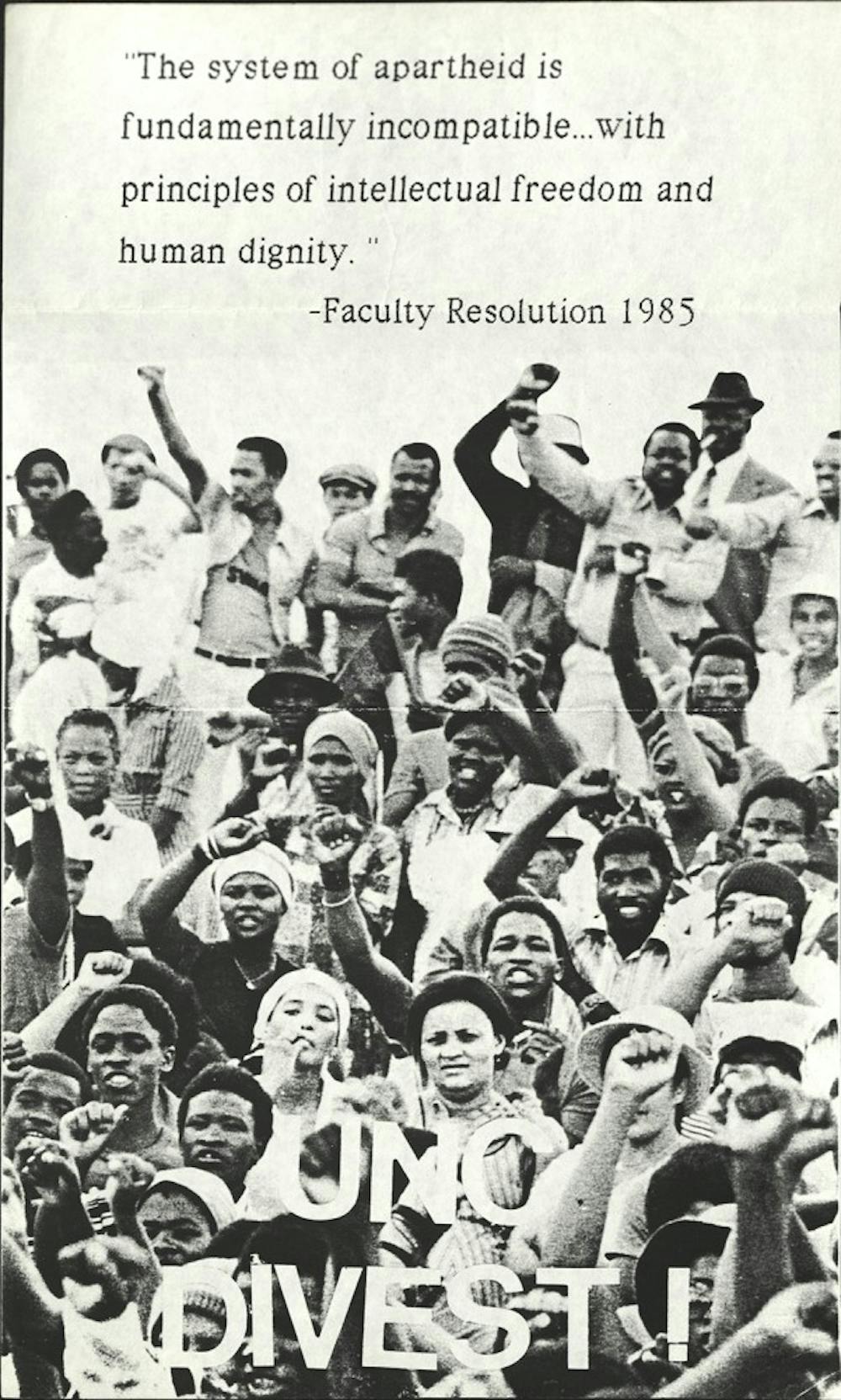This is part of a series of stories looking into different parts of UNC’s long history and how life at the University has changed over time.
In the 1980's, UNC students protested against Apartheid, a system of racial segregation in South Africa.
Dale McKinley, a political activist in South Africa, grew up in Zimbabwe and was a graduate student at UNC in the 1980's. He was involved with the Anti-Apartheid Support Group, which formed at UNC in 1985.
"Myself and a few others thought that it would be good if we started a group on campus to raise the issues, particularly around divestment from the UNC funds in any companies that had been doing business with South Africa,” McKinley said. "So that’s what we did, we just called a meeting and invited anybody that wanted to join and took off from that point."
Divestment at UNC meant removing the University’s endowment funds from businesses that, at the time, were based or did a lot of of work out of South Africa.
Lisa Lindsay, a history professor at UNC who was also a student anti-apartheid activist at Johns Hopkins University in the 1980's, said the African National Congress, a Black Nationalist organization and political party in South Africa, encouraged outside parties to divest.
“Their strategy was that there would be external economic sanctions and internal unrest and these two together would force the South African government to negotiate and end Apartheid, which is in fact exactly what happened,” Lindsay said.
McKinley said 30 to 40 people attended the first meeting of the Anti-Apartheid Support Group and over the next few months he said the base of active group members grew to about 100. But when the group began taking action, McKinley said hundreds of students came out in support.
Nicholas Graham, University archivist, said the faculty passed a resolution during this time encouraging the endowment committee of the Board of Trustees to divest. He said student referendums also showed support for divestment.




